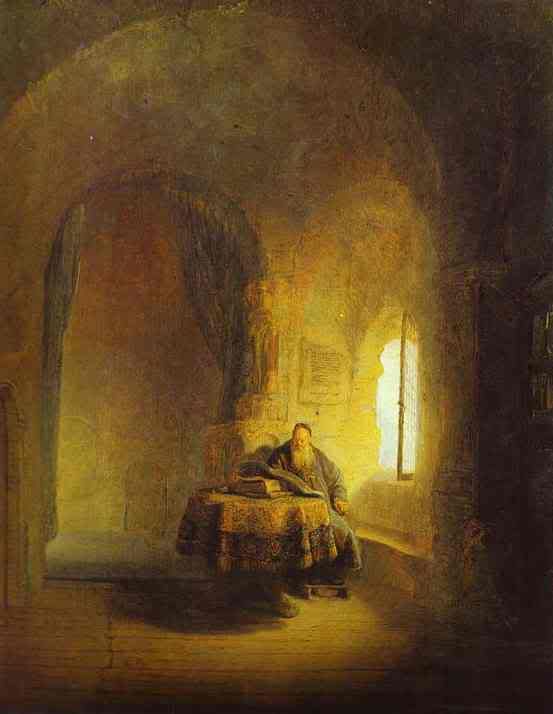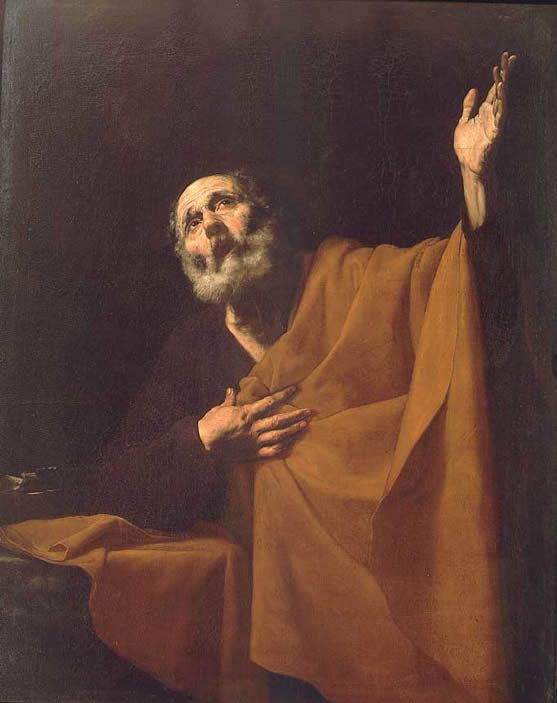We cannot know for certain what God intends, of course, but provided an activity isn’t inherently sinful, it can only help us if we look to God in doing it well, entrusting the final results to God. The maxim pray for rain and dig for water seems to apply here.
Let's Get Physical 3: Is Christian Yoga an Oxymoron?
Growing Flowers Is an Essential Business - Especially in Lockdown!
How to Pray With Visual Imagery
It is now more than three and a half years since I started this blog so first of all I would like to thank so many of you for your interest and your comments. I am currently involved in several book projects which will be published in the early part of next year - more information to come. In order to give myself time to write these, I thought I would reduce my postings to one fresh piece per week. However, it also occurred to me that many of you who read this, will not have seen much of what I posted in the first two years. In my mind, these are foundational to my thinking and shed light on much of what I write now, so I thought they would be worth repeating. So for these two reasons I thought I would replay some of these foundational posts. So for the next couple of months, I will alternate old and new. The first replay was first published in April, 2010:
 When I first started painting icons I was, of course, interested in knowing as well how they related to prayer. I was referred by others (though not my icon painting teacher) to books that were intended as instruction manuals in visual prayer. I read a couple and perhaps I chose badly, but I struggled with them. One the one hand, they seemed to be suggesting some sort of meditative process in which one spent long quiet periods staring at an icon and experiencing it, so to speak, allowing thoughts and feelings to occur to me. Being by nature an Englishman of the stiff-upper-lip temperament (and happy to be so) I was suspicious of this. I had finally found a traditional method of teaching art that didn’t rely on splashing my emotions on paper, and here I was being told that in the end, the art I was learning to produce was in fact intended to speak to us through a heightened language of emotion. Furthermore, the language used to articulate the methods always seemed to employ what struck me as pseudo-mystical expressions and which, I suspected, were being used to hide the fact that they weren’t really saying very much.
When I first started painting icons I was, of course, interested in knowing as well how they related to prayer. I was referred by others (though not my icon painting teacher) to books that were intended as instruction manuals in visual prayer. I read a couple and perhaps I chose badly, but I struggled with them. One the one hand, they seemed to be suggesting some sort of meditative process in which one spent long quiet periods staring at an icon and experiencing it, so to speak, allowing thoughts and feelings to occur to me. Being by nature an Englishman of the stiff-upper-lip temperament (and happy to be so) I was suspicious of this. I had finally found a traditional method of teaching art that didn’t rely on splashing my emotions on paper, and here I was being told that in the end, the art I was learning to produce was in fact intended to speak to us through a heightened language of emotion. Furthermore, the language used to articulate the methods always seemed to employ what struck me as pseudo-mystical expressions and which, I suspected, were being used to hide the fact that they weren’t really saying very much.
So I started to ask my teacher about this and to observe Eastern Christians praying with icons. What struck me was that prayer for them seemed to be pretty much what prayer was for me. They said prayers that contained the sentiments that they wished to express to God. The difference between what they did and what I did at that time was that they turned and looked at an icon as they prayed. Also, when at home, often happily and without embarrassment they sang their prayers using very simple, easily learnt chant. Before meals, for example, the family would stand up, face an icon of Christ on the wall and sing a prayer of gratitude or even just the Our Father.
As I learnt more about icons through learning to paint them, I realized that every aspect of the style of an icon is worked out to engage us in a dynamic that assists prayer – through its form and content the icon will do the work of directing our thoughts to heaven. In short I don’t need to ‘do’ anything. The icon does the work for me.
The iconographic form is not the only one to do this. The Western Catholic tradition is very rich and has also the Baroque and gothic art forms that are carefully worked out to engage the observer in a dynamic of prayer, although in different ways. If the icon draws our thoughts to heaven, the baroque form is designed in contrast to have an impact at a distance in order to make God present on earth. The gothic figurative art is the art of pilgrimage, or of transition from earth to heaven, and stylistically it sits between the iconographic and baroque. It is the ‘gradual psalm’ of artistic form. Just like the spires of its architecture, it spans the gap between heaven and earth so that we have a sense both of where we going to and where we are coming from. I will discuss how the form of each tradition achieves in the next articles I write.
So the advice I was given was to ditch the books about praying with icons, and learn first to pray. Then as I pray always aim to have visual imagery that I allow to engage my sight and which assists. St Augustine said that those who sing their prayers pray twice. I would add that those who look at visual imagery as well pray three times (and if we use incense four times, and consider posture five). This process of engaging different aspects of the person in addition to the intellect is a move towards the ideal of praying with the whole person. This is what praying from the heart means. The heart is the vector sum of our thoughts and actions. It is our human centre of gravity when both body and soul are considered. It is the single point that, when everything is taken into account, defines what I am doing. It is the heart of us, in the sense of representing the core. This is why it is a symbol of the person. It is a symbol of love also because each of us is made by God to love him and our fellow man. It symbolizes what we ought to be rather than, necessarily, what we are. The modern world has distorted the symbolism of the heart into one of desire and ‘heartfelt’ emotion, precisely because these are the qualities that so many today associate with the essence of humanity.
The liturgy is ultimate form of prayer. By praying with the Church, the mystical body of Christ, we are participating in ‘Christ's own prayer addressed to the Father in the Holy Spirit. In the liturgy, all Christian prayer finds its source and goal.’[1] Therefore, the most important practice of praying with visual imagery is in the context of the liturgy. For example, when we pray to the Father then we look at Christ, for those who have seen Him have seen the Father. The three Catholic figurative traditions in art already mentioned were developed specifically to assist this process.
Just as the liturgy is the ‘source and goal’ of prayer, so liturgical art is, I would argue, the source and goal of all Catholic art. The forms that are united to the liturgy are the basis of Catholic culture. All truly Catholic art will participate in these forms and so even if a landscape in the sitting room, will point us to the liturgical. We cannot become a culture of beauty until we habitually engage in the full human experience of the liturgy. In the context of visual art, this practice will be the source of grace from which artists will be able to produce art that will be the basis of the culture of beauty; the source of grace and from which patrons will know what art to commission; and in turn by which all of us will be able to fulfill our vocation, whatever it may be, by travelling on the via pulchritudinis, the Way of Beauty, recently described by Pope Benedict XVI.
Of course, each individual (depending upon his purse) usually has a limited influence on what art we see in our churches. However, as lay people, we can pray the Liturgy of the Hours and control imagery that we use. The tradition of the prayer corner, in which paintings are placed on a small table or shelf at home as a focus of prayer, is a good one to adopt. We ‘orientate’ our prayer towards this, letting the imagery engage our sight as we do so. We can also sing, use incense and stand, bow, sit or kneel as appropriate while praying. A book I found useful in this regard, which describes traditional practices is called Earthen Vessels (The Practice of Personal Prayer According to the Patristic Tradition) by Gabriel Bunge, OSB
Does this mean that meditation of visual imagery is not appropriate? No it does not. But as with all prayer that is not liturgical, it is should be understood by its relation to the liturgy. So just as lectio divina, for example, is good in that it is ordered to the liturgy because through it our participation in the liturgy is deepened and intensified. So, perhaps, should meditation upon visual imagery should be understood in relation to the use of imagery in the liturgical context. Also, I would say that it is useful, just as with lectio, to avoid the confusion between the Western and Eastern non-Christian ideas of meditation and contemplation are. I was recommended a book recently that helped me greatly in this regard. It is called Praying Scripture for a Change – An Introduction to Lectio Divina by Dr Tim Gray.
[1] CCC, 1073
St Barnabas, St Paul and St Thomas More on Cultivating Christian Joy, Even in Suffering: speaking to us through the Liturgy of Hours
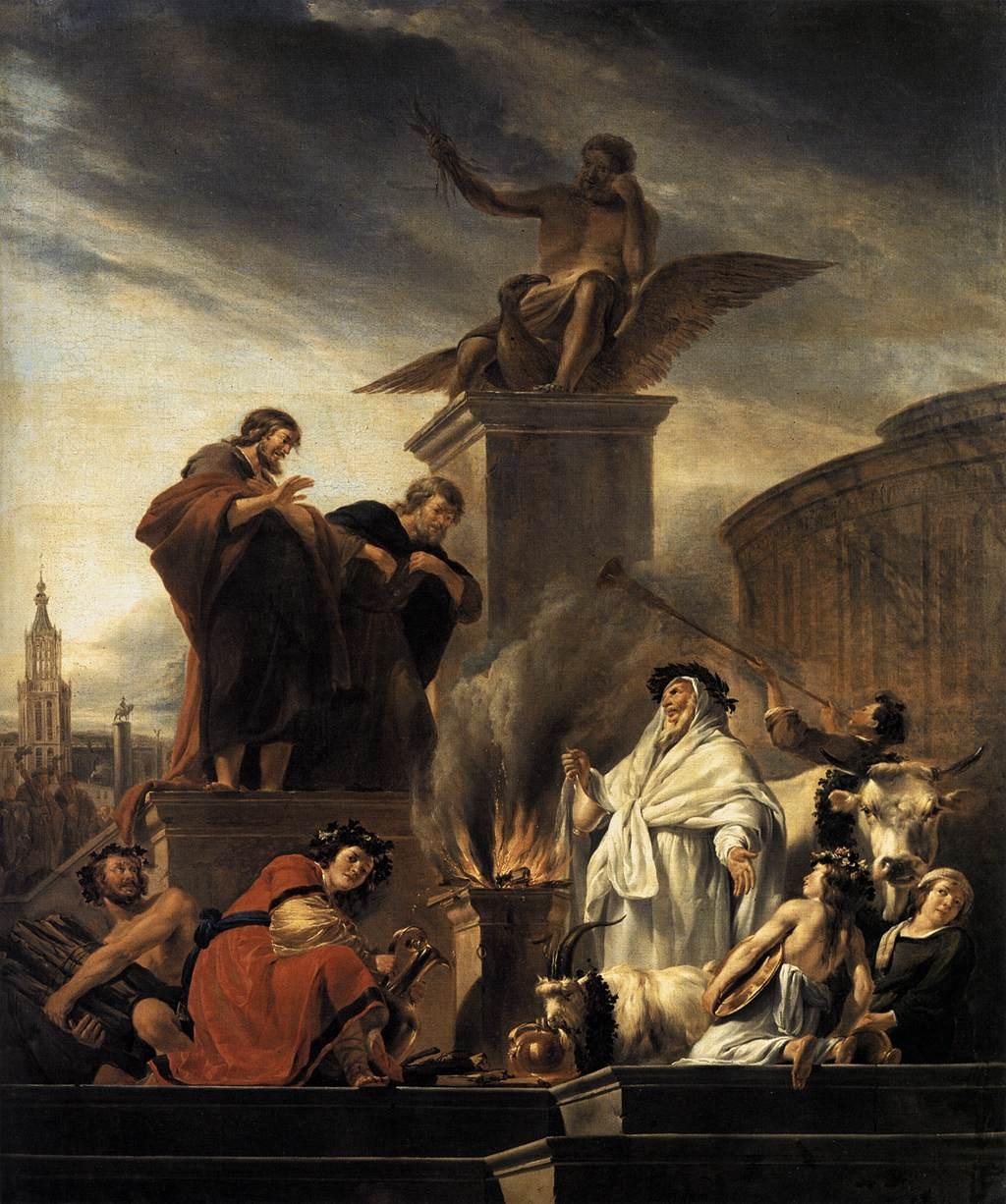 ‘Whatever experience comes your way, accept it as a blessing, in the certainty that nothing can happen without God’ Letter attributed to Barnabas, Ch 19
I am a convert. There are of course, many reasons that I became a Catholic, but an important one was the conviction that I would lead a happier life if I did. (I’m talking about this life, the here-and-now as much as the hereafter.)
‘Whatever experience comes your way, accept it as a blessing, in the certainty that nothing can happen without God’ Letter attributed to Barnabas, Ch 19
I am a convert. There are of course, many reasons that I became a Catholic, but an important one was the conviction that I would lead a happier life if I did. (I’m talking about this life, the here-and-now as much as the hereafter.)
One of the most influential figures in my conversion was a man called David who insisted that Christian joy comes as a result of the personal choices we make and is open to anyone. He taught me also how to cultivate Christian joy. David, incidentally, is the same person who gave me the vocational guidance that I have referred to before, here, and which rests so much on an assumption that God wants us to be happy. I was prepared to listen to him because he genuinely seemed a joyful person to me; and this was despite the fact that he had a heart condition that meant he could not walk without a stick and had to rest to catch his breath every 50 yards. The example of joy in adversity was powerful.
I have been reminded of David and his lessons of over 20 years ago now recently through readings from the liturgy of the hours. The things that he said to me about the joy of the Catholic life seem to me to be echoed in three readings I noticed this summer. This reinforces the for me just how powerful the liturgy is in educating and forming the person.
There are a number of aspects to cultivating joy of course, but one powerful contributor was a simple meditation called ‘counting my blessings’. Each day, he suggested, I should write down the good things that have happened that day – a ‘Gratitude List’ - and then as part of my daily prayers, thank God for these gifts. He was insistent that actually writing them down was important.
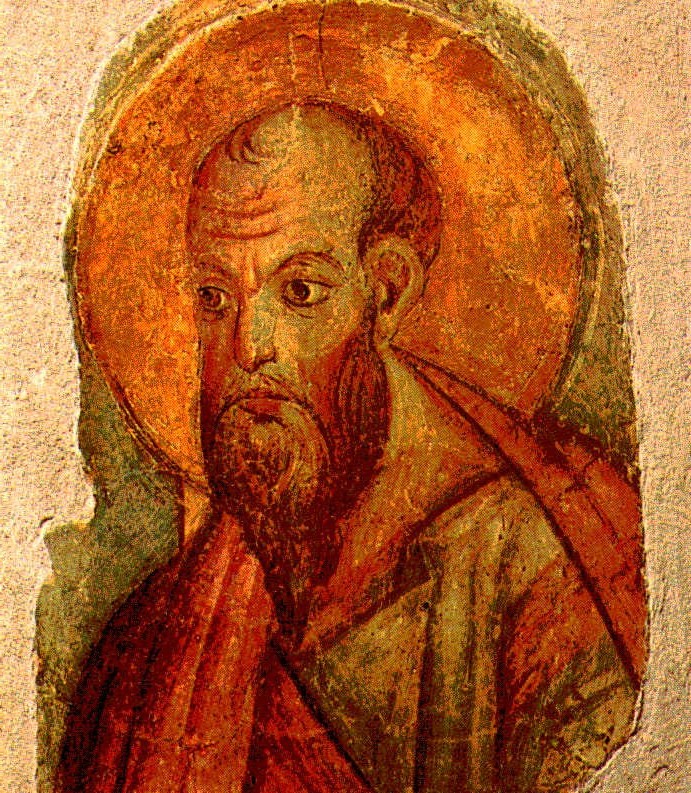 When I first met him I was miserable and not grateful for very much at all. He wrote out my first Gratitude List for me, which at this stage consisted of things I ought to be grateful for rather than things that I actually felt grateful for. I remember him starting with the basic necessities: he asked me first if I had eaten that day, then he wrote down ‘food’; then he looked at me and noted that I was clothed, and wrote ‘clothes’ on the list. ‘Do you have somewhere to sleep tonight?’ he asked me. When I answered yes he wrote to down, ‘Bed to sleep in’; and then he asked, is this outside or indoors? He wrote down ‘roof over my head’. Then he paused: ‘You have affirmed to me that each item on this list is true. So here you have written proof that this morning when you asked God to look after you today, he answered your prayer.’ He also told me that these things’ put me ahead’ of a significant proportion of the world’s population who didn’t know where their next meal was to come from. ‘Therefore,’ he said, ‘You really don’t have any good reason for complaining about your lot.’
When I first met him I was miserable and not grateful for very much at all. He wrote out my first Gratitude List for me, which at this stage consisted of things I ought to be grateful for rather than things that I actually felt grateful for. I remember him starting with the basic necessities: he asked me first if I had eaten that day, then he wrote down ‘food’; then he looked at me and noted that I was clothed, and wrote ‘clothes’ on the list. ‘Do you have somewhere to sleep tonight?’ he asked me. When I answered yes he wrote to down, ‘Bed to sleep in’; and then he asked, is this outside or indoors? He wrote down ‘roof over my head’. Then he paused: ‘You have affirmed to me that each item on this list is true. So here you have written proof that this morning when you asked God to look after you today, he answered your prayer.’ He also told me that these things’ put me ahead’ of a significant proportion of the world’s population who didn’t know where their next meal was to come from. ‘Therefore,’ he said, ‘You really don’t have any good reason for complaining about your lot.’
This was over 20 years ago and since then, pretty much daily, I have been writing a gratitude list. To this list of necessities, I always add half a dozen or so ‘luxuries’: the things that I have received that a more than what need. So any through this I thank God as well for any other positives in the day, major or minor. Pretty soon, perhaps after about a month or so, I noticed that I genuinely felt grateful for these things. But the benefits went further than that. The result for me has been to reinforce the faith in a loving God who is actively looking after me. There has never been a day when I haven’t been given all that I need.
This does seem to leave gaps though. It’s one thing to appreciate the good things, but another to accept the bad things and still be happy. I have had to deal with many of the setbacks and disappointments that one would expect in an ordinary life. They way I deal with these is to remember something else that David told me. That if we assume that a loving God is working in my life and wants me to be happy, then I should remember that all that happens is either willed by God directly, or if it is bad, is permitted by God for good reason. (God, who is all goodness cannot be the author of something that is bad.) This means that if I could see the bigger picture then I would be able to see what this greater good was but because I am not able to I can have faith that there is a greater good nevertheless. Perhaps it is a lesson learnt for the good of my soul, or it is directing me down a path that will reap greater rewards later. In order to help cultivate gratitude for these bad things, David used to put them on his gratitude list too and praise God for them, on the grounds that even these must be permitted by a God who had his best interests at heart. I have adopted his habit and have found this powerful in helping to intensify a faith in a loving God.
This last point was reinforced by two quotations in the Liturgy recently.
 From Office of Readings, Wednesday Week 18 of the Year, Letter attributed to Barnabus, Ch 19: ‘Whatever experience comes your way, accept it as a blessing, in the certainty that nothing can happen without God.’
From Office of Readings, Wednesday Week 18 of the Year, Letter attributed to Barnabus, Ch 19: ‘Whatever experience comes your way, accept it as a blessing, in the certainty that nothing can happen without God.’
From Lauds, Wed, Week II, Romans 8:35, 37: 'Nothing can come between us and the love of Christ, even if we are troubled or worried, or being persecuted, or lacking food or clothes, or being threatened or even attacked. These are the trials through which we triumph, by the power of him who loved us.'
Despite the success of this tool in my own life, it still doesn’t go far enough, I think. In many ways I have led a privileged life and haven’t had to face extreme suffering. This little technique might be good for the everyday ups and downs of everyday life, but does this idea apply to those who suffer torture, or who went through the Nazi concentration camps. This is where the study of the lives of the saints paid dividends for me. I studied the writing of saints who had been through such things and was struck by the joy they talk about even in such adversity. It seems that God’s grace really can overcome anything. I should state at the same time, I am very far from ready to volunteer for such suffering. However, the more I read passages such as the one that follows, the more it reinforces the idea that whatever the situation there is sufficient grace, if I cooperate, for me to overcome it.
 From Office of Readings, June 22nd, a letter written by St Thomas More to his daughter Margaret from prison: 'Although I know well, Margaret, that because of my past wickedness I deserve to be abandoned by God, I cannot but trust in his merciful goodness. His grace has strengthened me until now and made me content to lose goods, land, and life as well, rather than to swear against my conscience. God’s grace has given the king a gracious frame of mind toward me, so that as yet he has taken from me nothing but my liberty. In doing this His Majesty has done me such great good with respect to spiritual profit that I trust that among all the great benefits he has heaped so abundantly upon me I count my imprisonment the very greatest. I cannot, therefore, mistrust the grace of God. Either he shall keep the king in that gracious frame of mind to continue to do me no harm, or else, if it be his pleasure that for my other sins I suffer in this case as I shall not deserve, then his grace shall give me the strength to bear it patiently, and perhaps even gladly.
From Office of Readings, June 22nd, a letter written by St Thomas More to his daughter Margaret from prison: 'Although I know well, Margaret, that because of my past wickedness I deserve to be abandoned by God, I cannot but trust in his merciful goodness. His grace has strengthened me until now and made me content to lose goods, land, and life as well, rather than to swear against my conscience. God’s grace has given the king a gracious frame of mind toward me, so that as yet he has taken from me nothing but my liberty. In doing this His Majesty has done me such great good with respect to spiritual profit that I trust that among all the great benefits he has heaped so abundantly upon me I count my imprisonment the very greatest. I cannot, therefore, mistrust the grace of God. Either he shall keep the king in that gracious frame of mind to continue to do me no harm, or else, if it be his pleasure that for my other sins I suffer in this case as I shall not deserve, then his grace shall give me the strength to bear it patiently, and perhaps even gladly.
By the merits of his bitter passion joined to mine and far surpassing in merit for me all that I can suffer myself, his bounteous goodness shall release me from the pains of purgatory and shall increase my reward in heaven besides.
I will not mistrust him, Meg, though I shall feel myself weakening and on the verge of being overcome with fear. I shall remember how Saint Peter at a blast of wind began to sink because of his lack of faith, and I shall do as he did: call upon Christ and pray to him for help. And then I trust he shall place his holy hand on me and in the stormy seas hold me up from drowning.
And if he permits me to play Saint Peter further and to fall to the ground and to swear and forswear, may God our Lord in his tender mercy keep me from this, and let me lose if it so happen, and never win thereby! Still, if this should happen, afterward I trust that in his goodness he will look on me with pity as he did upon Saint Peter, and make me stand up again and confess the truth of my conscience afresh and endure here the shame and harm of my own fault.
And finally, Margaret, I know this well: that without my fault he will not let me be lost. I shall, therefore, with good hope commit myself wholly to him. And if he permits me to perish for my faults, then I shall serve as praise for his justice. But in good faith, Meg, I trust that his tender pity shall keep my poor soul safe and make me commend his mercy.
And, therefore, my own good daughter, do not let your mind be troubled over anything that shall happen to me in this world. Nothing can come but what God wills. And I am very sure that whatever that be, however bad it may seem, it shall indeed be the best.'
Images: Nicolaes Berchem, St Paul and St Barnabas Preaching at Lystra, 17th century. St Paul, ancient wall painting; St Barnabus, Rembrandt, 17th century; St Thomas More, polychrome statue at St Thomas More parish, Pottsdown, Pennsylvania. Below: Hans Holbein' drawing of the More
Compunction of the Heart - A Form of Meditation for Lent
 From: The Rule of St Benedict, Chapter 49 ‘The Observance of Lent’ ‘We urge the entire community during these days of Lent to keep its manner of life most pure and to wash away in this holy season the negligences of other times. This we can do in a fitting manner by refusing to indulge in evil habits and by devoting ourselves to prayer with tears, to reading, to compunction of heart and self denial’
A small group from Thomas More College of Liberal Arts went for an evening Lenten retreat at the Benedictine Abbey in Still River, Massachusetts. As in our last visit (link here) we arrived for Vespers at 6pm, and then were the guests of the community for dinner. After dinner we had a talk from one of the brothers of the community and after individual reading or prayer we went to Compline before returning home. Just as before, it was a great experience for all of us.
From: The Rule of St Benedict, Chapter 49 ‘The Observance of Lent’ ‘We urge the entire community during these days of Lent to keep its manner of life most pure and to wash away in this holy season the negligences of other times. This we can do in a fitting manner by refusing to indulge in evil habits and by devoting ourselves to prayer with tears, to reading, to compunction of heart and self denial’
A small group from Thomas More College of Liberal Arts went for an evening Lenten retreat at the Benedictine Abbey in Still River, Massachusetts. As in our last visit (link here) we arrived for Vespers at 6pm, and then were the guests of the community for dinner. After dinner we had a talk from one of the brothers of the community and after individual reading or prayer we went to Compline before returning home. Just as before, it was a great experience for all of us.
To begin his talk the brother of the community who took care of us (most graciously too I might add) read the short chapter from the Rule of St Benedict on Lent. He told he was going to talk about a form of meditation called ‘compunction of the heart’. Before he described it he asked us who had heard of this. No hands went up. I have read the rule a number of times and so must have read the phrase each time, but it had never registered with me that it might be technique that I could practice. I must have just skipped over the words.
 Here is my recollection and understanding of what he told us (any confusion present is likely mine, not his!): each time we go through the sacrament of reconciliation, the process of repentance, confession and forgiveness of sins moves us closer to God. The desire for reconciliation can be motivated both positively and negatively. The negative is the desire to be closer to God driven by a fear of the consequences of our sin and a need to escape the discontent of our guilt; and the positive is a genuine desire to be closer to God again for his own sake by healing the wound of separation. While the positive is better than the negative, either is better than none at all.
Here is my recollection and understanding of what he told us (any confusion present is likely mine, not his!): each time we go through the sacrament of reconciliation, the process of repentance, confession and forgiveness of sins moves us closer to God. The desire for reconciliation can be motivated both positively and negatively. The negative is the desire to be closer to God driven by a fear of the consequences of our sin and a need to escape the discontent of our guilt; and the positive is a genuine desire to be closer to God again for his own sake by healing the wound of separation. While the positive is better than the negative, either is better than none at all.
When we practice compunction of the heart, we recall our sins of the past and relive that motivation to be close to God but separated from the sin that caused it. We must be clear that sin has been confessed and forgiven, and so we are not to re- confess. However the recollection of that motivation to be with God and the desire to be Him can be used to spur us on to closer to him now.
We can do this anywhere – it is something that works well in snatched moments in a busy day.
Since this was our introduction to the idea, we were encouraged to read about it and find out more. We were warned also that if we tried it we should be sure that is was leading us to God. If it was a reliving of the sins of the past that was us to self-pity, we should probably stop and seek guidance. Also, he said, this is a something that is suited to a busy lay life because we really can do this anywhere. It works well for instance if we dwell on these thought for just a few snatched moments in a busy day.
So the next time I join the line for the supermarket checkout, who knows, perhaps some of those in front of me, apparently daydreaming while they wait are in fact practicing compunction of the heart.
Images: Ribera, (Spanish, 17th century) the Penitent St Peter; and the Penitent St Mary Magdalen
Below, people in a line for the bank teller, possible practising compunction of the heart.
And, below, relics of saints practising compunction of the heart.
The Practice of Lectio Divina (3): Ephrem the Syrian on the Inexaustible Treasury of Scripture
 Scripture, Part of the Foundation of Joy (part three; part one here; part two here) This is from the Office of Readings of Sunday Week 6 of Ordinary Time. It is from a Commentary on the Diatassaron by St Ephrem the Syrian. It certainly inspires me to keep on reading the bible and makes this point that God speaks to me at the level I am at, and so the same piece of scripture can say different things to me on the next reading. The sub-heading is: God's Word is an inexaustible spring of life.
Scripture, Part of the Foundation of Joy (part three; part one here; part two here) This is from the Office of Readings of Sunday Week 6 of Ordinary Time. It is from a Commentary on the Diatassaron by St Ephrem the Syrian. It certainly inspires me to keep on reading the bible and makes this point that God speaks to me at the level I am at, and so the same piece of scripture can say different things to me on the next reading. The sub-heading is: God's Word is an inexaustible spring of life.
'Lord, who can comprehend even one of your words? We lose more of it than we grasp, like those who drink from a living spring. For God’s word offers different facets according to the capacity of the listener, and the Lord has portrayed his message in many colours, so that whoever gazes upon it can see in it what suits him. Within it he has buried manifold treasures, so that each of us might grow rich in seeking them out.
The word of God is a tree of life that offers us blessed fruit from each of its branches. It is like that rock which was struck open in the wilderness, from which all were offered spiritual drink. As the Apostle says: They ate spiritual food and they drank spiritual drink.
 And so whenever anyone discovers some part of the treasure, he should not think that he has exhausted God’s word. Instead he should feel that this is all that he was able to find of the wealth contained in it. Nor should he say that the word is weak and sterile or look down on it simply because this portion was all that he happened to find. But precisely because he could not capture it all he should give thanks for its riches.
And so whenever anyone discovers some part of the treasure, he should not think that he has exhausted God’s word. Instead he should feel that this is all that he was able to find of the wealth contained in it. Nor should he say that the word is weak and sterile or look down on it simply because this portion was all that he happened to find. But precisely because he could not capture it all he should give thanks for its riches.
Be glad then that you are overwhelmed, and do not be saddened because he has overcome you. A thirsty man is happy when he is drinking, and he is not depressed because he cannot exhaust the spring. So let this spring quench your thirst, and not your thirst the spring. For if you can satisfy your thirst without exhausting the spring, then when you thirst again you can drink from it once more; but if when your thirst is sated the spring is also dried up, then your victory would turn to harm.
Be thankful then for what you have received, and do not be saddened at all that such an abundance still remains. What you have received and attained is your present share, while what is left will be your heritage. For what you could not take at one time because of your weakness, you will be able to grasp at another if you only persevere. So do not foolishly try to drain in one draught what cannot be consumed all at once, and do not cease out of faintheartedness from what you will be able to absorb as time goes on.'
I have just one comment on the icon of St Ephrem. Ephrem lived from the first part of the 4th century and in 1920 was proclaimed by Pope Benedict XV as a Doctor of the Church. Among his famous writing are his Hymns of Paradise. The sunken cheekbones in the icon are used to show asceticism. Ephrem was not a monk as monasticism as we know it was only beginning to take hold in Egypt during this period. However, he lived in a Christian community that had similar disciplines and he is venerated in the East as an example of monastic discipline. Hence the sunken cheeks.

Monastery in the Syrian desert (this is of St Moses the Ethiopian). I hope their spring is inexaustible, just looking at it makes me feel parched!
The Practice of Lectio Divina - a Source of Joy (2)
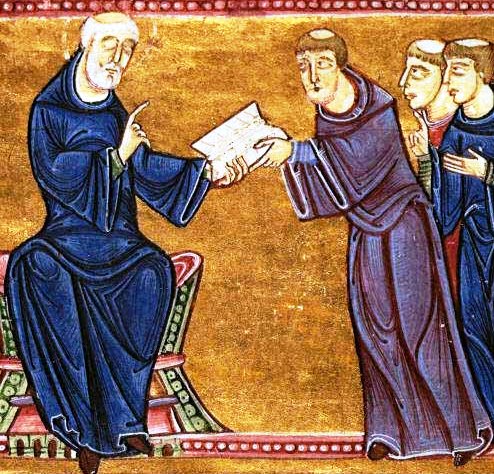 Scripture, Part of the Foundation of Joy (part two; read part one, here) I am not an expert in this at all, but I thought that my experiences of trying (and often failing) to learn the technique and practice it, might be a starting point for others who wish to make a beginning also. Also I would encourage any of you who have experience to offer any helpful thoughts for the benefit of the readership…
Before I even began my investigation of lectio divina, the point was made to me that it is good to go to someone who can structure my spiritual life so that all of these things have a unity that allow them to nourish and support my ordinary daily activities. The danger is that I just tack one more devotion onto the daily list of personal obligations without proper understanding of how it relates to the other things that I do and the whole thing becomes a burden, in which I feel guilty if don’t tick all the boxes that day.
Scripture, Part of the Foundation of Joy (part two; read part one, here) I am not an expert in this at all, but I thought that my experiences of trying (and often failing) to learn the technique and practice it, might be a starting point for others who wish to make a beginning also. Also I would encourage any of you who have experience to offer any helpful thoughts for the benefit of the readership…
Before I even began my investigation of lectio divina, the point was made to me that it is good to go to someone who can structure my spiritual life so that all of these things have a unity that allow them to nourish and support my ordinary daily activities. The danger is that I just tack one more devotion onto the daily list of personal obligations without proper understanding of how it relates to the other things that I do and the whole thing becomes a burden, in which I feel guilty if don’t tick all the boxes that day.
Now for lectio divina itself: the first part is lectio. This just means reading. The first thing I have to do is select a passage to read. I was told to start with the gospels. If I aim to do it regularly, it was suggested that I try to go through the bible systematically, even if this means that it will take years to go through it once. One person told me another systematic approach to begin with is to pick the readings, or just the gospel reading, for Mass that day. If you don’t have a Missal to hand, www.universalis.com has the readings each day.
So having selected the passage I say a short prayer, that I might be receptive to whatever God wants to say to me through the passage I read. And then I read away. As phrases catch my attention I re-read. If nothing catches my attention, I just re-read the whole allotted passage a number of times. One helpful piece of advice given to me was that God will speak to me at the level I am at. So I shouldn’t worry that I am not a scripture scholar who isn’t instantly aware, for example, of the parallels between Old and New Testaments or the allegory that it contains, and so on.
 However, it is a good idea, I was told to support this lectio, if I have time, with reading of commentaries on scripture, that my understanding might increase in time. I was told to be careful with modern commentaries as many (including some by Catholic writers) do not adopt a starting postion of faith that this is the inspired Word, and so a skepticism creeps into their work. I play safe and go for the Church Fathers and even here I let the Church guide me through her liturgy. The Office of Readings has a passage every day by a Church Father and very often this is a commentary on scripture. So I let the Church educate me as I worship God the Father in the Liturgy. Here is this dynamic, described yesterday, of Liturgy illuminating Scripture and Scripture intensifying my participation in the Liturgy. Again, the Universalis website is a great source for the Office of Readings each day.
However, it is a good idea, I was told to support this lectio, if I have time, with reading of commentaries on scripture, that my understanding might increase in time. I was told to be careful with modern commentaries as many (including some by Catholic writers) do not adopt a starting postion of faith that this is the inspired Word, and so a skepticism creeps into their work. I play safe and go for the Church Fathers and even here I let the Church guide me through her liturgy. The Office of Readings has a passage every day by a Church Father and very often this is a commentary on scripture. So I let the Church educate me as I worship God the Father in the Liturgy. Here is this dynamic, described yesterday, of Liturgy illuminating Scripture and Scripture intensifying my participation in the Liturgy. Again, the Universalis website is a great source for the Office of Readings each day.
The second part is meditatio. This means ‘I think’. This was always a source of confusion for me. In this age of post-Beatles, Maharishi Yogi pop culture, I thought that meditating on a phrase meant repeating it like a mantra in Eastern meditation. And that the goal was one of the elimination of thought; or at the very least it was a passive process of just letting my mind drift in the ethereal breeze and see what thoughts might crop up, but without reacting to them. I couldn’t work out what I was supposed to be doing here – it seemed to be contradictory to the idea of trying to understand the passage, which involved the application of reason to what was being read. My predicament wasn’t help by many of the books that I first read about Lectio Divina. Some (perhaps influenced by pop culture too) read as though they had been written by a beatnik writer who described it as an invitation for me to indulge in my emotions through undirected random or stream-of-consciousness style thought, on the assumption that because I had just read a bit of the bible, this was God at work in my mental processes. I was suspicious of this undirected approach.
The way out of this changed when I was told something about the distinction between Christian and Eastern, non Christian, ideas of meditation. Meditate, in the Christian tradition means more ‘meditate upon’, the same as ‘think’. So while in meditatio I do pause and allow for the prompting of the Spirit in the form of occurring thoughts and ideas; when they do occur I react to them by mulling over them, perhaps asking myself: what does this mean? Is there something that applies to me directly? How can I act on this in the rest of the day? And so on.
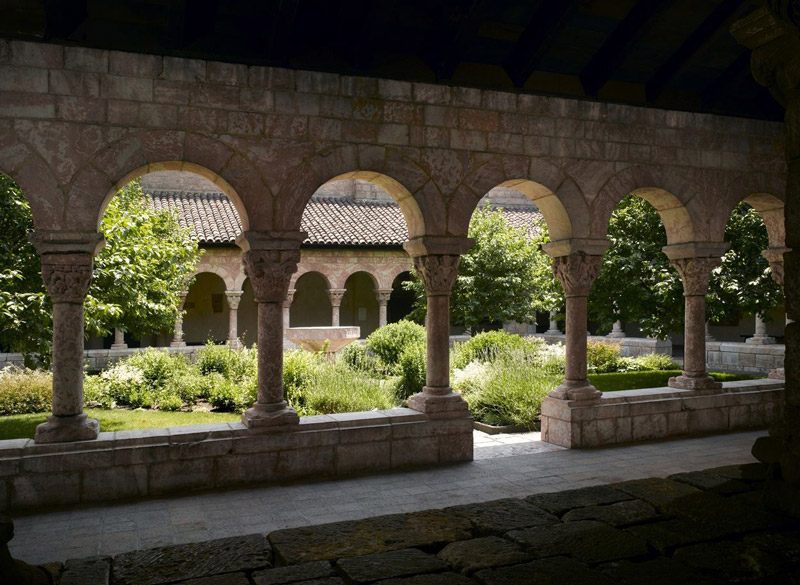 This leads to the third stage, Oratio – prayer. So here I can ask God to show me how to act on something or help me in those areas that the meditation highlighted. The worry for me here was that sometimes I didn’t seem to have any profound lessons or thoughts to react to. This meant I didn’t know what to pray, except perhaps, ‘please give me some profound lessons or thoughts’. Here again I was given some helpful advice by someone with much greater experience than me. He said that quite often this happened to him and he didn’t think it was anything to worry about, he simply said some prayers in which he praised God for having this chance to hear his Word.
This leads to the third stage, Oratio – prayer. So here I can ask God to show me how to act on something or help me in those areas that the meditation highlighted. The worry for me here was that sometimes I didn’t seem to have any profound lessons or thoughts to react to. This meant I didn’t know what to pray, except perhaps, ‘please give me some profound lessons or thoughts’. Here again I was given some helpful advice by someone with much greater experience than me. He said that quite often this happened to him and he didn’t think it was anything to worry about, he simply said some prayers in which he praised God for having this chance to hear his Word.
I find that once I start reading, I can move gently from one to the other, reading, thinking, saying a short prayer and then reading again.
The fourth part is contemplatio. This is contemplative prayer. As you can imagine, this originally caused me confusion too. I thought contemplation and meditation meant pretty much the same thing. And given the fact that I didn’t initially understand what meditation was, the inclusion of contemplation just compounded it even further. So I needed another explanation: in contrast to mediatio , this part is passive. It is passive in the sense that it is a state of mind that is given to us as a gift from God and actively pursuing it cannot guarantee its occurance. If I have understood the descriptions properly, it is a state of stillness of mind; one of just being with God and it sounds something like the descriptions of the beatific vision when we are in full union with God in heaven. However, as it is a gift from God, I should be careful in interpreting anything from about it or concluding anything about my spiritual development, or about how well I have done the first three stages. God either gives it to me or he doesn’t. Contemplation, therefore, is not a reward or goal of the first three stages, in that sense, it is just something that might happen, or it might not over which we have very little control. For myself, all I can say is that if it happened to me, I didn’t notice (which I’m guessing probably means that is hasn’t happened!).
The reason I do this is the reason that I am driven to do any of these things. I believe that ultimately and generally, I will be the happier for doing so, rather than any immediate reward of a pleasant emotion or feeling during the process.
At this point, I was going to include another passage from the Office of Readings at the end of this, but given the length of this piece so far, so I’ve decide d to tack on a Part Three, which will appear tomorrow. It is by the 3rd century Father, Ephraim the Syrian.
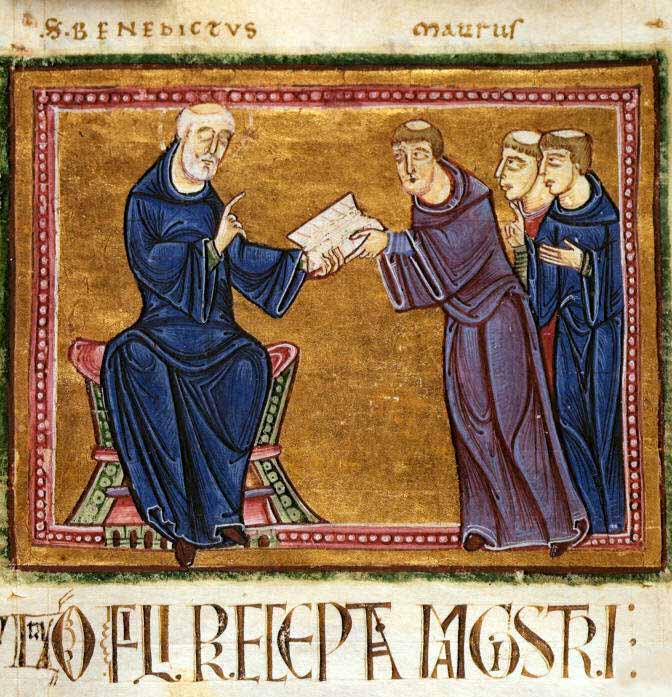
The Practice of Lectio Divina - a Source of Joy (1)
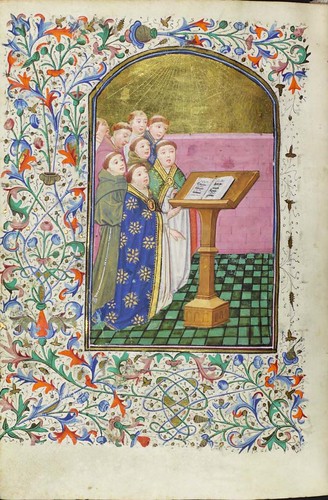 Scripture, part of the foundation of joy (part one, part two tomorrow)
Scripture, part of the foundation of joy (part one, part two tomorrow)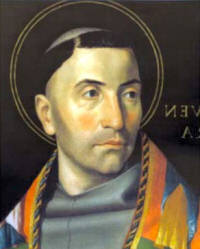 Here is St Bonaventure (whose picture is shown) from the Office of Readings of Monday Week 5 of the year:
Here is St Bonaventure (whose picture is shown) from the Office of Readings of Monday Week 5 of the year: